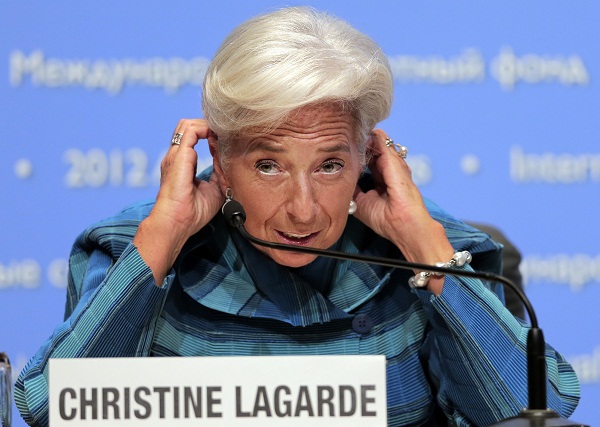
International Monetary Fund (IMF) chief Christine Lagarde reacts during a news conference at the IMF and World Bank’s annual general assembly in Tokyo, Thursday, October 11, 2012. AP FILE
WASHINGTON, United States — The IMF on Sunday defended negative interest rates set by central banks, given “significant risks” of slow growth, while acknowledging potential for dangerous boom-and-bust cycles.
Six central banks, notably the European Central Bank and the Bank of Japan, have taken the unprecedented measure, aimed at loosening the reins on credit to help spur consumer spending and investment.
READ: IMF cuts PH growth forecast for ’16 | Rising income inequality in Asia worrying—IMF chief
“Although the experience with negative nominal interest rates is limited, we tentatively conclude that overall they help deliver additional monetary stimulus and easier financial conditions,” three top officials at the International Monetary Fund wrote in a blog.
It comes ahead of the IMF’s annual Spring Meetings this week in Washington.
In mid-March, IMF Managing Director Christine Lagarde said that the unorthodox negative short-term rates, in which commercial banks pay central banks to hold their money, had probably supported stronger economic growth.
While in theory the concept should work, economists are closely studying what happens in Europe and Japan amid worries that negative rates could actually provoke businesses and consumers to be more cautious about spending.
The three IMF officials also had words of caution.
“Negative interest rates may induce boom and bust cycles in asset prices. These potential risks require close monitoring and supervisory scrutiny,” they said.